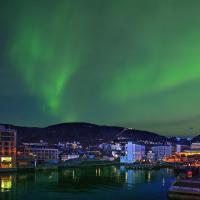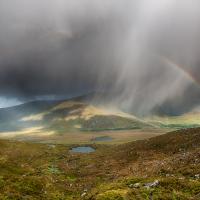Another week of the covid19 restrictions on travel and social activities, so sadly the IOM Photographic Society was forced to another postponement of its planned weekly meeting. In lieu, the committee arranged another Zoom session, this one featuring Kieran Metcalfe who is a landscape photographer based in Manchester. His theme was chasing the light, that most important component of all photography.
He uses only average equipment including an inexpensive digital camera and at least one of his lens bought second-hand, believing that modern cameras and lenses with their inbuilt sophistication are all capable of producing sharp images. So pleasing landscape images perhaps do not require expensive kit, but certainly thought, imagination and good ideas will help, the photographer needing to plan and prepare, and if necessary, return to the chosen location when the unpredictabilities of weather and light are more suitable.
He suggested a number of apps for use on a mobile phone which forecast the weather, the likely cloud situation, the time of sunrise and sunset, and even the likelihood of an aurora borealis as essential tools in the planning process. Kierans work as a landscape photographer gave particular emphasis to the direction of the light, and to ensuring that the highlights in the image - the areas to which the eye is naturally drawn as opposed to the shadows were the areas he as the author wished them to be. Hence the need to be patient!
Kieran also stressed that he was reasonably computer literate, so his workflow included shooting in RAW this is a digital format compared to an undeveloped negative and which contains an enormous amount of detailed information which can be manipulated in software such as Photoshop or Lightroom to maximise the potential of the final image. The use of graduated filters to balance the highlights and shadows in high contrast images where the sun is bright and creating deep shadows, or bracketing with a number of images taken at various exposures using a tripod was also explained. Whilst modern cameras are very capable, they have a limit in terms of sensitivity to light. The eye, by contrast, is able to interpret and see detail in a wider range of lit and shadow areas. So, bracketing with a range of images varying from overexposed to underexposed enables a skilled worker to merge the images into one the eye finds pleasing. It might be as simple as merging just two images, say a sky with lovely clouds (but the ground under-exposed and too dark) with a well-lit landscape (but an over-exposed and burnt-out sky), but is often more complex but again, there are software options which do the job very well. The trick is to ensure a final image which the eye sees as being realistic.
Jeremy Broome-Smiths image of the Calf of Man lighthouses arguably fails that test the sky a long -exposure to smooth the clouds to a silky appearance against a fast shutter speed for a sharp capture of the Calf and its lighthouses. My shot of Bergen with the Northern Lights also comprises just two images the sky plus the cityscape and perhaps also fails the test. However, Jeremys shot of an Irish rainbow is simply superb, a well matched series of images to produce a dramatic and memorable finished shot.
With the shut-down, readers should check our website www.iomps.com or Facebook page for any update of our planned meetings. Our meetings are held the St John Ambulance HQ on Glencrutchery Road, starting at 7:00 pm and are open to the public (non-members with a modest entry fee), and all will be given a very warm welcome.
By Chris Blyth
CAPTIONS:
IMAGE 01: 'Irish Rainbow' by Jeremy Broome-Smith
IMAGE 02: 'Bergen Northern Lights' by Chris Blyth
IMAGE 03: 'Calf of Man Lighthouses' by Jeremy Broome-Smith



